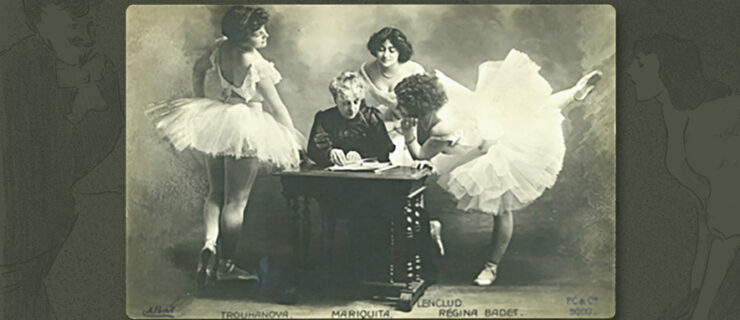Why ABT's Gillian Murphy Loves the Complexity of Gamzatti in "La Bayadère"
By Gillian Murphy, as told to Amy Brandt.
Gamzatti was one of my first principal roles, when I was 19. Over the last 20 years I’ve had a chance to develop the character and find nuances. At first I saw her more as a villain and Nikiya as the good character. That’s changed over time. I don’t condone her actions, but she does what she believes is right. And Nikiya has a part to play in what happens. I’ve danced both roles and love each, but I feel like Gamzatti has more to dig into. She really has dimension.
Natalia Makarova, who choreographed the ballet after Petipa, wants Gamzatti to be very proud and entitled, bordering on arrogant. That’s a strange feeling to exude. But Gamzatti was raised to believe in duty and status; she wants her arranged marriage to Solor to go smoothly. When she finds out that he might be meeting with Nikiya, a temple dancer, she tries to take care of it. She explains that Solor is already taken. From Gamzatti’s perspective, she’s being quite generous by offering Nikiya her necklace—she could comfortably live off those riches for the rest of her life. When Nikiya throws her to the ground and proceeds to pull a knife on her, it’s beyond anything Gamzatti has ever experienced; she’s only known privilege and wealth. I think she feels justified in taking more drastic measures to marry Solor, as planned. When Nikiya is bitten by the snake, Gamzatti feels sort of triumphant, like, “This is what you had coming.” I don’t think the guilt hits her until later.
 Murphy in “La Bayadère.” Photo by Gene Schiavone, Courtesy ABT.
Murphy in “La Bayadère.” Photo by Gene Schiavone, Courtesy ABT.
The third act offers more chances to show Gamzatti’s complexity. Keeping up appearances is very important to her; she realizes that her marriage to Solor is doomed, but she’s obligated to marry him. Thus, her third-act solo can be very emotional to dance. I wrote down a quote from Makarova, or at least I’m paraphrasing her: Don’t be empty inside. I try to let the character’s feelings and internal dialogue inform the movement, especially when the variation has a lot of technical elements. The mood is clearly ominous, and despair is brewing inside of her. But in that solo, she’s also letting Solor know that she’s going to be a powerful ruler once they’re married—that’s how that’s going to go down.
 Murphy in “La Bayadère.” Photo by Gene Schiavone, Courtesy ABT.
Murphy in “La Bayadère.” Photo by Gene Schiavone, Courtesy ABT.
My characterization depends a lot on who is playing Solor. All of my partners have brought something different to their role. For instance, at the engagement party in the first act, some act more receptive to the idea of marrying Gamzatti. Others are clearly in love with Nikiya, and it’s more of a struggle to get their attention. My interpretation changes a lot based on how my partner proceeds after that scene. The same is true for Nikiya—because she’s so spiritual and of a lower station, she’s often portrayed as being more low-key. But one of the strongest confrontations I ever faced was with Nina Ananiashvili. Her Nikiya was so fervent in her belief that she and Solor had sworn eternal love. It was very intense. I try to feel whatever Gamzatti’s feeling in the moment—it’s always a journey.
Tip: Find your character’s walk, says Murphy. “It informs who she is and how she carries herself. Gamzatti’s walk is different from Kitri’s or Giselle’s. She’s a little bit sensual and has a strong, slightly arched carriage in her back, with the chest lifted.”





